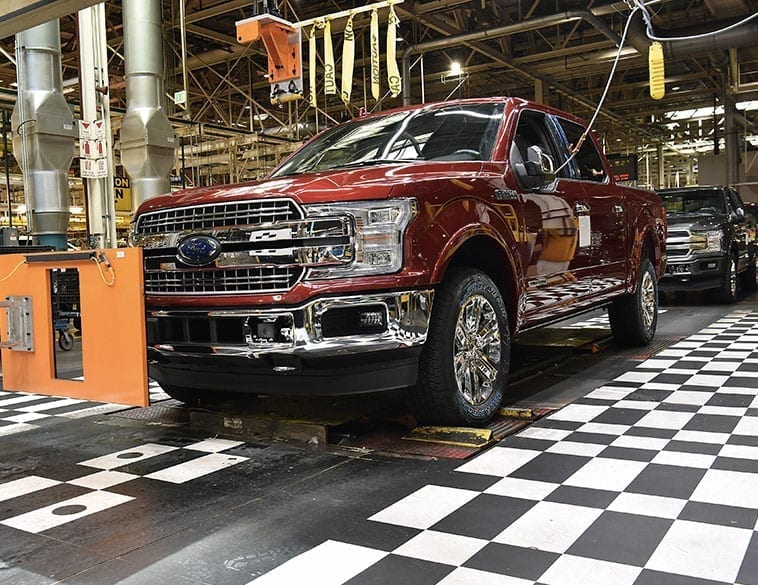While new vehicle sales and wholesales have improved, headwinds still remain on the horizon.
There’s no question that it’s been tumultuous several months for vehicle sales, especially once the full brunt of COVID-19 hit in March.
At the start of the year, new vehicle sales in both Canada and the U.S. were off to a fairly robust start with 109,265 and 1,144,279 new vehicle sales* reported in January.
In March, things came off the rails, with demand plummeting as dealership showrooms were closed and government lockdowns came into play as a result of the rapid spread of COVID-19.
April, predictably, saw paltry volume in new vehicle sales (45,833 for the month in Canada (710, 827 in the U.S.) and although demand has started to recover since then, the situation still remains very unpredictable.
The right direction
According to David Adams, President of the Global Automakers of Canada (GAC), while new-vehicle demand is still far off the pace of where it was this time last year, trends indicate that we’re heading in the right direction.
That being said, there are some interesting developments that both OEMs and many dealers are closely monitoring. A significant one is vehicle manufacturing capacity.
Since May, OEMs have been restarting assembly plants and implementing safety protocols to minimize COVID-19 transmission, yet as Adams notes, for automakers within the GAC membership, a number of which have plants located in South Eastern U.S. states such as Alabama, Georgia, South Carolina and Tennessee, the current spike in COVID cases could disrupt manufacturing again.
Even for Detroit based automakers, which have restarted production at Michigan plants in an effort to meet the demand for pickups and SUVs, state governor Gretchen Whitmer recently warned that if residents do not wear masks, businesses could be forced to close again, including vehicle assembly plants.
New trade agreement
Also, as Adams notes, the introduction of the new USMCA free trade agreement between Canada, the U.S., and Mexico (which came into effect on July 1), could also mean further headwinds, especially since Mexico, which is also grappling with the COVID-19 and has seen a major spike in cases over the last two months (an accumulated total of more than 318,000 as of July 15).
They could face significant disruptions that would impact automotive parts and even vehicle manufacturing.
The result could mean that dealers in both Canada and the U.S. could face a significant shortage of new vehicle inventory for the foreseeable future.
Additionally, with new trade and tariffs in place as a result of the USMCA, some vehicles assembled in Canada and the Mexico that were previously exempt under NAFTA could now be taxed, making it uneconomical to export them to the U.S.
This could put pressure on manufacturing and the supply chain, though could allow savvy Canadian dealers could take advantage of lower wholesale values to satisfy demand.
Wholesale prices still robust
On the used car side, while wholesale prices were expected to plummet as the pandemic took hold, that hasn’t happened—yet. According to Jonathan Smoke, Chief Economist at Cox Automotive in the U.S., as of July 12, wholesale prices had improved for 10 straight weeks.
Here in Canada, data from Canadian Black Book (CBB) points to only very marginal declines in wholesale values in July, following a ramping up since May.
According to CBB, this situation is expected to be temporary. The onset of lease returns, fleet liquidations, and the return of repossessions as conditions normalize is expected to drive wholesale values downward as we enter the fall and winter seasons.
CPO opportunities
Yet with fewer people driving, the quality of used vehicles out there is actually improving, plus the onslaught of lease returns could mean good business in Certified Pre-Owned (CPO) and near new vehicle business for dealers.
“We see lots of opportunity in near new vehicles,” says Jeremy Anspach, CEO at PureCars. “What we love about the segment is that dealers can really take advantage of top-shelf digital advertising around near new vehicles.”
Additionally, Anspach notes that “when customers are inundated with offers from OEMs but supply is limited, they are definitely intrigued when they see the success of a dealer’s effective digital ad strategy,” especially he says; “when a paid search that shows their query is relevant and that dealer can service them locally.”
*Source Marklines



